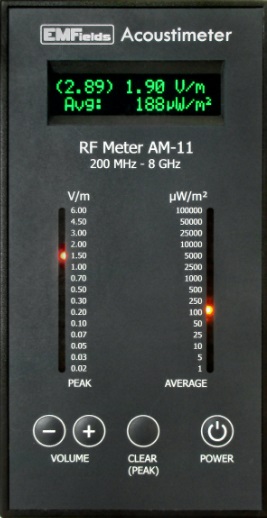January 2021
EMFSA’s opinions regarding criticisms of a report provided for a school:
Towards the end of last year, we provided a report for a school. The report was written within certain very limited prescribed parameters, as the client (the school), specifically insisted that a wired Wi-Fi system was not an option.
A complainant, who was not happy with the report, invited individuals, professionals in their respective fields, to give their opinions on our report.
Note that the complainant was well aware of the manner and procedures in which we normally conduct our surveys, having had personal experience of EMFSA always looking to hardwiring wireless (especially Wi-Fi) as option one.
However, the instructions by the client (the school), made it impossible for us to write a report that favoured the complainant’s expectation. We were then told by the complainant that unless we “change our report” there will be consequences. EMFSA does not operate in this way, we do not respond to threats.
The “advisors” were subsequently invited by the complainant to oppose the school and the report. By participating they are, in our opinion, condoning the above behaviour. This is reminiscent of the same type of responses we see from the industry.
One would have expected the “advisors” to examine and understand the facts before reaching conclusions. If we as EMFSA were asked to write a critique about a report compiled by somebody else, we would first of all determine that we have the correct details, background and scope under which such a report was written. We would have specifically confirmed the details with the author of the report as a professional courtesy.
However, the “advisors” seriously misinterpreted/misunderstood the report and the Europaem 2016 Guidelines to which the radiation measurements during the survey were compared.
The way the report is interpreted is, in our opinion, no doubt partially due to the school having incorrectly stated that we had endorsed the wireless Wi-Fi system. This is not true. The Confidentiality Clause in our report was ignored/misinterpreted and our advice was misquoted. Any statement that may have been made is as a consequence thereof and is therefore untrue and deliberately misleading.
We established that despite having a system which allowed for the school to apply the ALARA Principle, the school had no way of measuring in order to reduce and confirm the radiofrequency levels to the required “As Low As Reasonably Achievable”. The school in response, and in accordance with its declared policy, purchased an Acoustimeter AM-11 from us and senior staff were professionally trained (not by EMFSA) on how to interpret the readings.

We noticed that one of our critics at least congratulated the school on their purchase. The AM-11 is an excellent investment for schools and should be encouraged.
Most importantly, neither party appears to have taken our advice, which was to employ an independent IT specialist company to undertake a feasibility study on a proposed wired system. This being the “elephant in the room”, which we were obliged to draw attention to, had either party taken the initiative in this respect the matter might have been resolved long ago.
We also advised the concerned parent to obtain a letter from a suitably qualified medical professional detailing medical issues. This would have aided in the process of consulting with the school to fulfill its legal obligations as regards to hardwiring. As far as we are aware this advice was never acted upon.
We disagree with most of the “expert alternative opinions” on the basis that the attacks are on the messenger while deliberately ignoring nor understanding the message, the achieved and the future goals. Either our critics misread the report or the criticisms were scripted.
Note that, until giving our permission for the complainant to view the report [principle of transparency], we did our best to respond within the bounds of the Report’s Confidentiality Clause, having not received permission from the client (the school). As a result, our silence or apparent lack of response in this matter should not be misinterpreted.
Ignored by all the critics/advisors and not mentioned was:
The last paragraph in our report, in which we recommend that the school consults with us and our associate Mr Lech to further reduce the overall EMF exposure and improve on the light environment. Mr Lech is a doctoral candidate, multidisciplinary researcher, first author of a South African government commissioned study on the topic, and recipient of numerous international and local awards.
How would this proposal have benefitted the staff, learners and parents?
A better overall understanding of the EMF issue, healthier lifestyles, improved academic and sport performance, plus inclusion in a proposed Netflix series. The series is an add-on value to a research agreement with various countries, and will be filming the implementation of this agreement in the interest of scientific communications and development of policy and legislation.
The term “safe technology”
In our opinion, the term “safe technology” is an oxymoron because it might mislead the uninformed. The best one can hope for is “safer technology”. One cannot guarantee the absolute safety of anything, including technology.
We will be updating this post (as time allows) with a detailed review on each individual criticism.
Once our response is complete, no further correspondence will be entered into on the matter.
First up will be discussing the opinion of Associate Professor Olle Johansson:
https://www.emfsa.co.za/wp-content/uploads/2021/02/Prof-Olle.pdf
